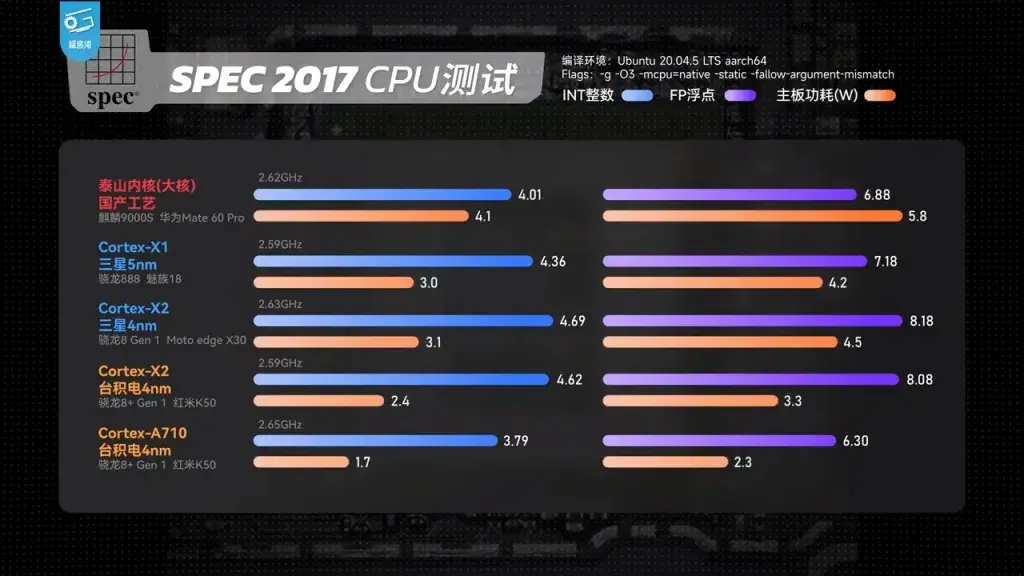Geek Bay, a well-known source for tech fans, recently did a detailed study on Huawei’s Kirin 9000 processor. They looked closely at how well its CPU and GPU perform. Now, let’s take a closer look at what they found.
Kirin 9000s CPU Performance Breakdown 
The Kirin 9000s has a CPU setup that includes one big custom core running at 2.62GHz, three medium custom cores at 2.15GHz, and four smaller A510 cores running at 1.5GHz. Here’s a simple summary:
- The big custom core: Although it is not as powerful as Snapdragon 888’s X1, it uses more power of about 1W more.
- The medium cores: The medium cores in terms of performance and energy efficiency are a bit behind Snapdragon 8 Gen 1’s A710.
- The small cores: The small A510 cores show slightly better energy efficiency when compared to Snapdragon 8 Gen 1’s A510.
Kirin 9000s Geekbench 5 Testing Results
The Kirin 9000S got 1005 points in single-core and 4019 points in multi-core performance. It used nearly 13W of power from the motherboard when running at full capacity. The CPU’s energy efficiency is better than the Snapdragon 888 but not as good as the Snapdragon 865 and the original Kirin 9000.
Enabling Hyper-Threading for the Taishan large and medium cores gives a performance boost of 21.8%. However, it also leads to a 24.2% increase in power consumption. (Taishan is Huawei’s custom CPU architecture, previously used in their own servers.)
Gizchina News of the week
Kirin 9000s GPU Performance 
The GPU, called Maleoon-910, has four cores and operates at 750MHz. Here’s a summary of what you should know:
- The GPU performance is similar to that of the Snapdragon 888, and its energy efficiency is also quite similar.
- When we compare the Kirin 9000S to the 9000 and Snapdragon 8 Gen 1, it’s a bit less energy efficient. Importantly, it shows a noticeable difference compared to the Snapdragon 8 Gen 2 in terms of energy efficiency.
Certain games haven’t fully optimized for the Kirin chip yet, so they may have slightly lower frame rates. For example, “Cold Water Cold” reached 52 fps at 7.0W (compared to Kirin 9000’s 54 fps at 5.8W), and “Crackdown 3” achieved 58 fps at 7.0W (compared to Kirin 9000’s 56 fps at 7.5W).
In summary, the Kirin 9000S has a CPU with slightly better multi-core performance and a GPU that’s on par with the Snapdragon 888. However, it lags behind in GPU energy efficiency. Nevertheless, it’s important to highlight that the Kirin 9000S’s performance is still impressive, especially when you consider that it’s domestically manufactured, showcasing China’s capabilities in chip production.
Looking ahead, there are intriguing rumors suggesting that the same chipset might be featured in Huawei’s upcoming Mate 60 Pro+ and Mate 60 RS. Exciting times await Huawei enthusiasts, so be sure to stay tuned for more updates and developments in the world of chipset technology.






the most importat is optimalisation. when the user is not a mobile game player of the latest and the most hw difficult games, this specification are enough for using. Huawei has always very well-tuned software with hardware.